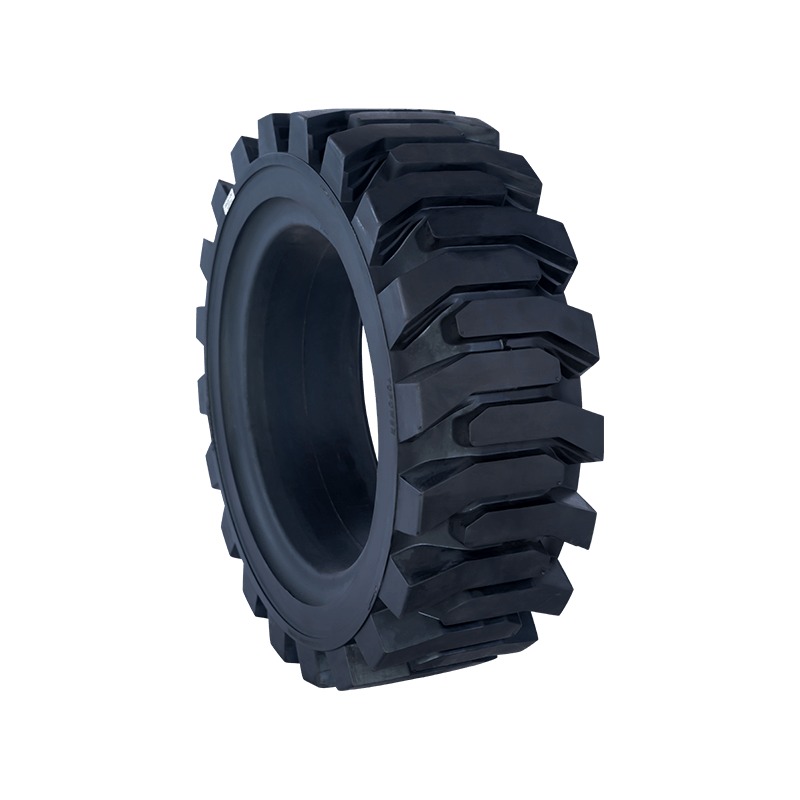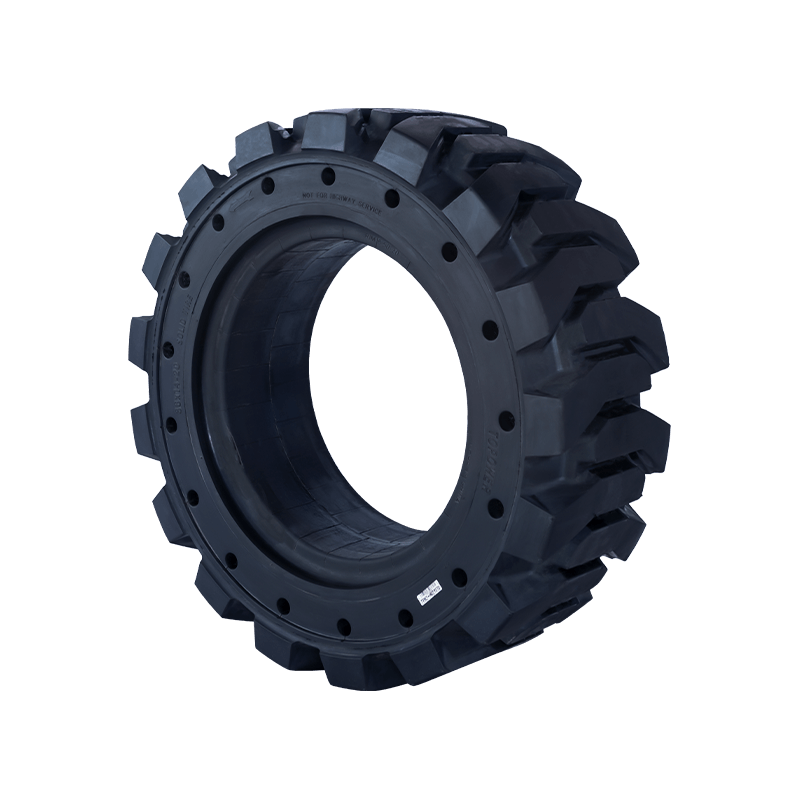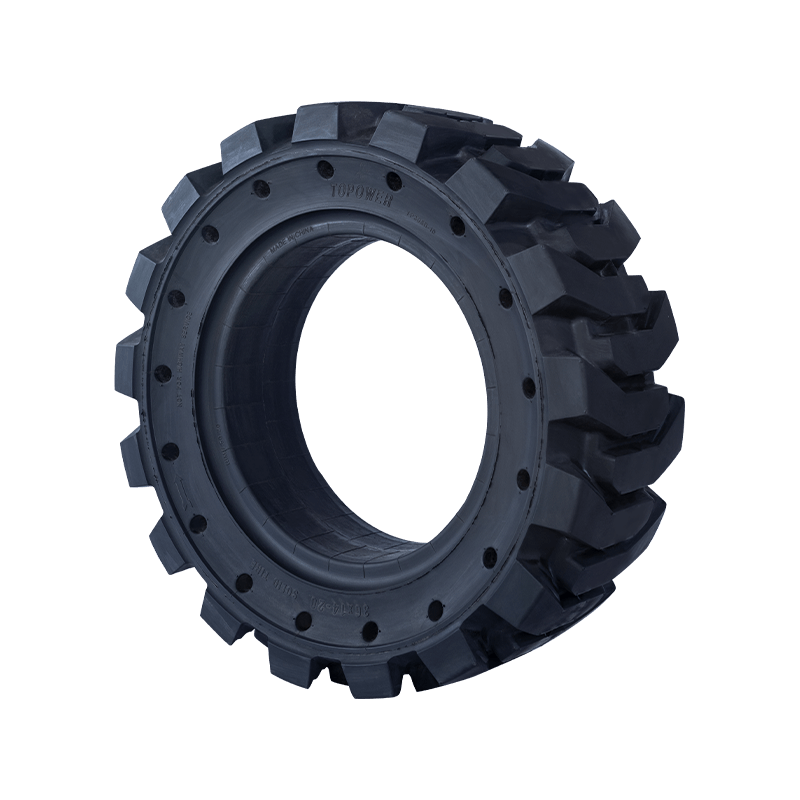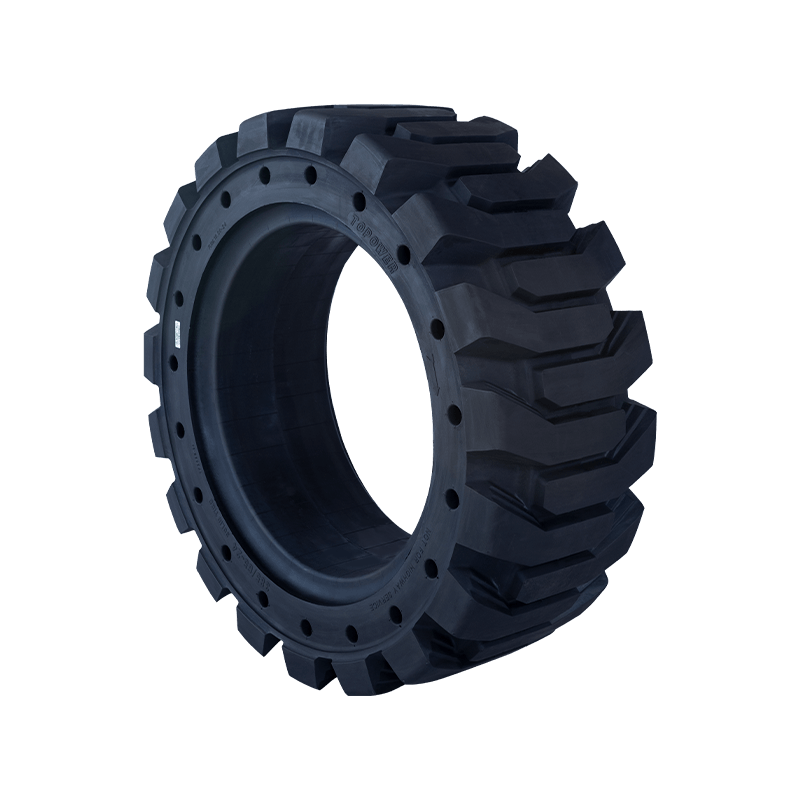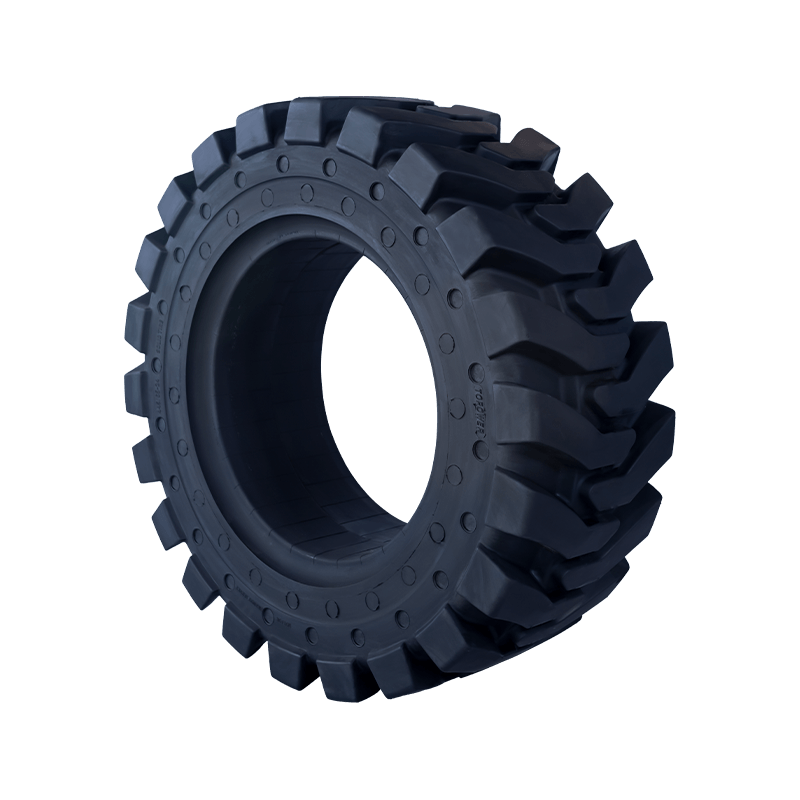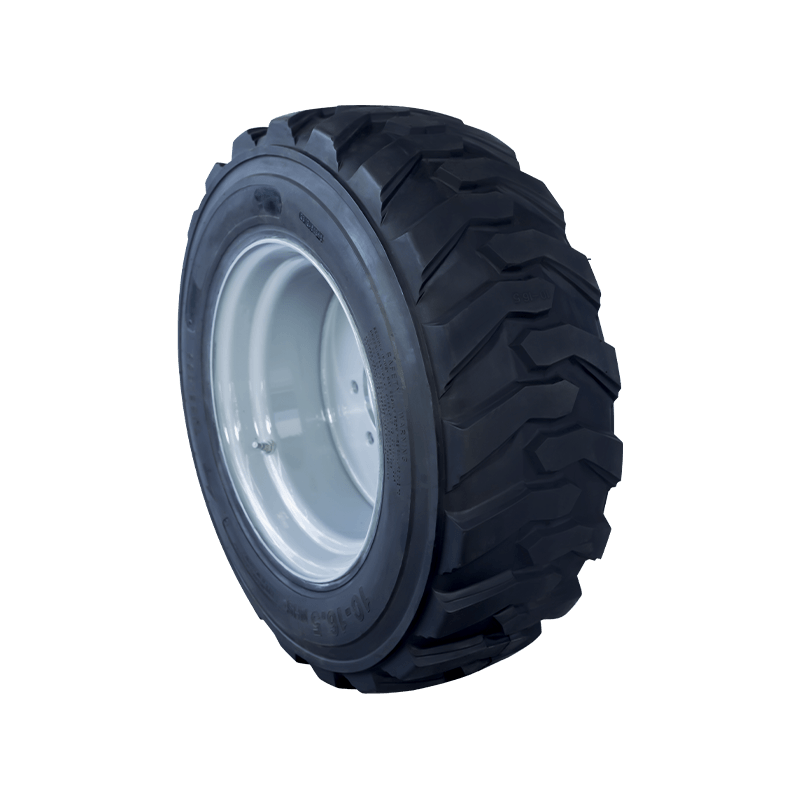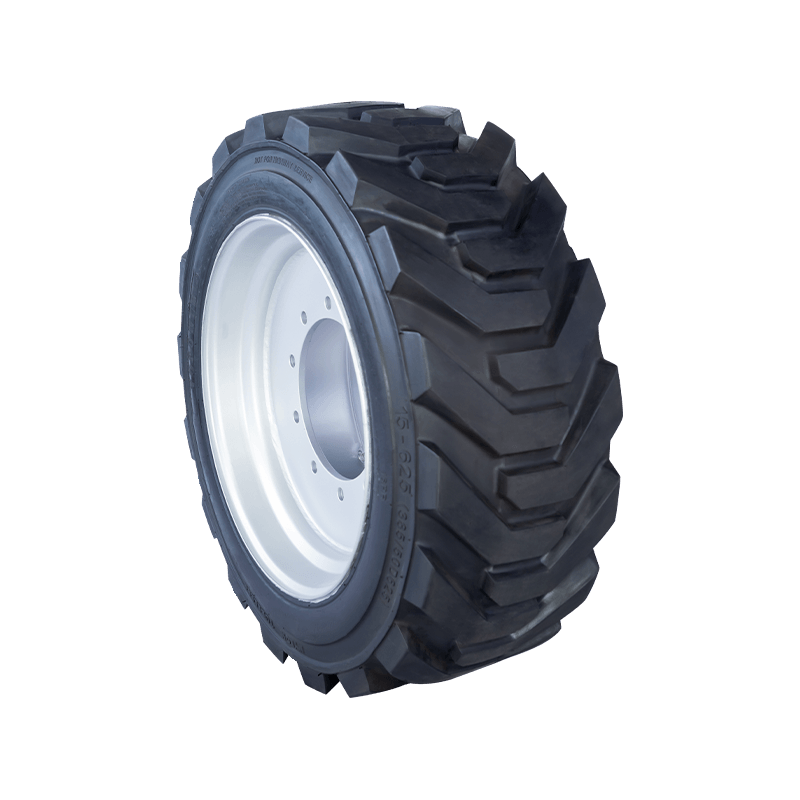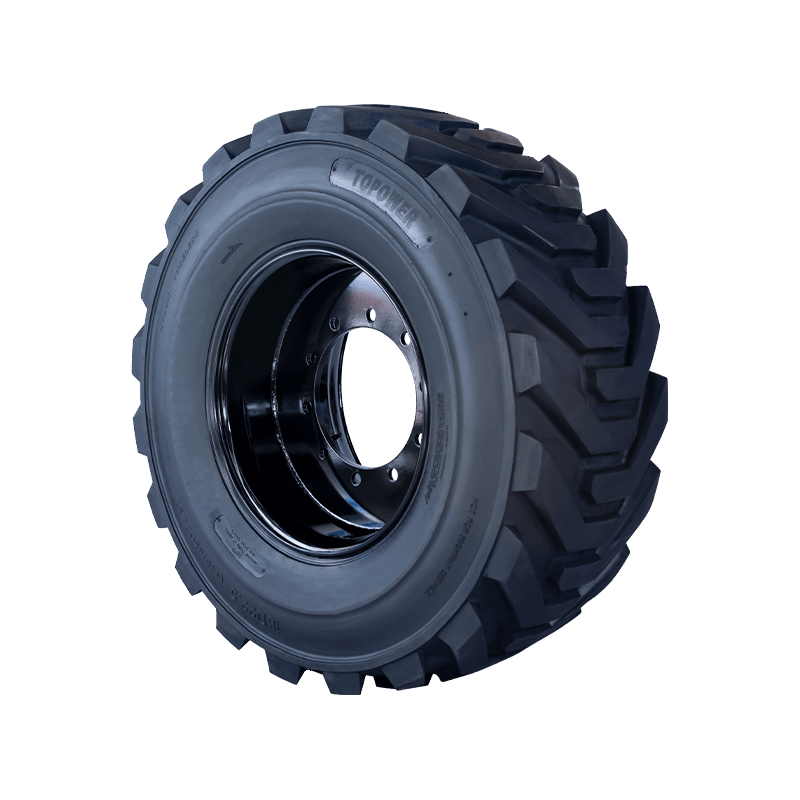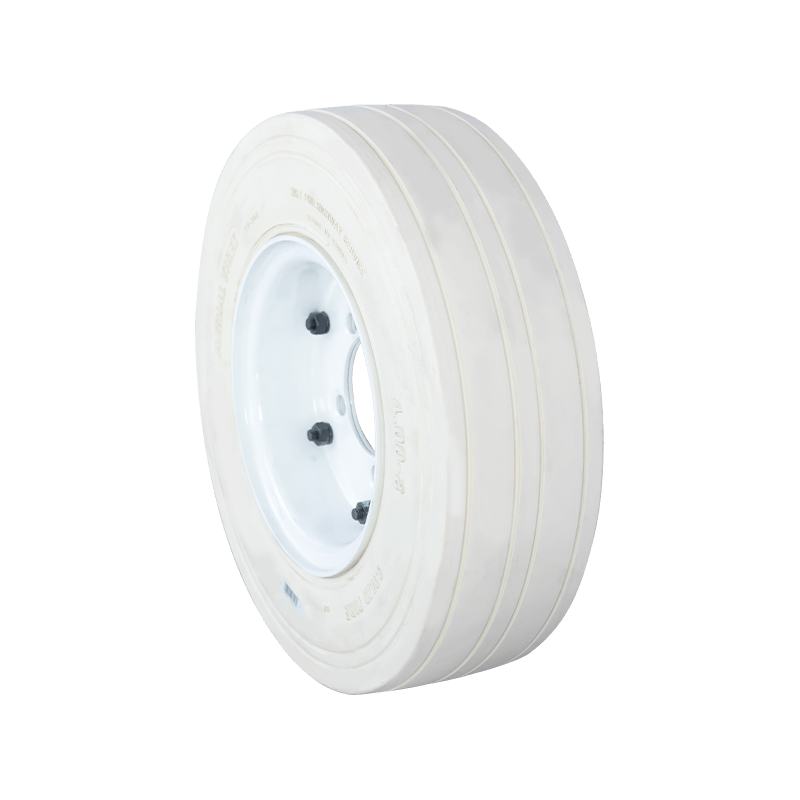The modern logistics environment demands near-perfect efficiency and uptime. Every minute lost to a puncture, a maintenance stop, or an unstable load directly impacts the bottom line. For any operation relying on material handling equipment—from port terminals and recycling centers to large-scale distribution warehouses—the tire decision is not merely a purchase; it is a critical strategic investment in safety and productivity. The Forklift Solid Tyre, designed for maximum endurance, stands in contrast to its resilient counterpart, the foam-filled pneumatic, and understanding this dichotomy is key to operational success
The Unyielding Strength of Solid Rubber Tires
The Anatomy and Purpose of the Forklift Solid Tyre
Solid Rubber Tires represent the pinnacle of puncture-proof technology. Unlike pneumatic tires that rely on air pressure for support and cushioning, solid tires are constructed from highly durable, dense rubber or synthetic compounds. This inherent density means they are completely immune to punctures and flats caused by nails, shards of metal, glass, or other debris commonly found in harsh industrial settings. For operations where debris is a constant and unavoidable threat—such as scrap yards, sawmills, foundries, and waste management facilities—the Forklift Solid Tyre is often the default and most reliable choice.
The design of a Solid Rubber Tires assembly typically features a robust base, a middle cushion layer (though less pronounced than a pneumatic), and a wear-resistant tread. This composition contributes to several key performance characteristics:
Puncture Immunity: This is the primary and most significant advantage. Zero risk of flats translates directly into zero downtime from tire failure, offering unparalleled operational continuity.
Stability and Load Capacity: Because they are not air-filled, solid rubber tires do not compress or deform significantly under heavy loads. This provides superior stability, especially when forklifts are operating at maximum load capacity and lifting to extreme heights. The reduced 'bounce' aids in precision stacking and enhances operator confidence.
Longevity: Due to the sheer volume of material and density, Solid Rubber Tires offer an exceptionally long service life. They wear down slowly and uniformly, often lasting two to three times longer than a standard pneumatic tire, though this longevity is often traded for comfort and speed limitations.
Limitations and Specific Use Cases
While their durability is unmatched, Solid Rubber Tires do come with trade-offs. The lack of air means they offer virtually no natural shock absorption. This results in a harsher, less comfortable ride for the operator, which can contribute to fatigue over long shifts. Furthermore, this lack of cushioning can transmit significant vibration and stress directly to the Forklift Tyre's chassis, steering components, and electronic systems, potentially increasing wear and tear on the machine itself over the long term.
Their rigid nature also makes them best suited for smooth, level surfaces, predominantly indoors or on well-maintained concrete and asphalt. On uneven, pitted, or gravel surfaces, the hard ride becomes extreme, negatively affecting load retention and travel speed.
The Resilient Innovation of Foam Filled Tires
Bridging the Gap: Performance and Flat-Proofing
The Foam Filled Tire represents an innovative solution designed to combine the best attributes of two different worlds: the ride quality of a pneumatic tire and the flat-proof security of a solid tire. The process involves taking a standard pneumatic Forklift Tyre (which typically has deeper, more aggressive treads than a solid tire) and injecting it with a liquid polyurethane compound. This liquid cures into a dense, yet still resilient, elastomer that completely fills the tire cavity.
This cured foam core functions as a non-pressurized, solid internal structure. Crucially, because it started as an air-filled tire, the surrounding rubber casing and deep tread patterns remain, offering excellent traction and a degree of inherent shock absorption that Solid Rubber Tires cannot replicate.
Key Advantages of the Foam Filled Tire
The adoption of the Foam Filled Tire addresses the major drawbacks of its solid counterpart, particularly in environments that demand both flat prevention and operator comfort:
Superior Shock Absorption and Operator Comfort: The foam core provides significantly better cushioning than a pure solid rubber tire. This dramatically reduces jolts and vibrations transmitted to the operator and the load, leading to reduced operator fatigue and a lower risk of load instability, especially when traversing bumps, joints, or moderately uneven terrain.
Enhanced Traction and Off-Road Capability: By utilizing the deep, aggressive tread of a pneumatic tire casing, the Foam Filled Tire offers substantially better grip, particularly on slippery surfaces, gravel, packed dirt, and slopes. This makes them highly suitable for outdoor operations, construction sites, and distribution yards where the surface quality varies.
Flat-Proof Assurance with Pneumatic Performance: While not immune to cuts or damage to the external rubber, the internal foam ensures that even a severe puncture will not result in a 'flat' tire. The foam simply seals around the intrusion, maintaining the tire's shape and load-bearing capacity, allowing the operation to continue uninterrupted until a scheduled replacement can be performed.
Detailed Technical Comparison
To clarify the choice between a dedicated Forklift Solid Tyre and a resilient Foam Filled Tire, the following table outlines the critical differences across various operational metrics.
|
Feature |
Solid Rubber Tires |
Foam Filled Tires |
Optimal Use Case |
|
Puncture Risk |
Zero (Immunity) |
Zero (Flat-proof, maintains shape) |
Extreme Debris (Solid) |
|
Ride Comfort |
Poor (Harsh, high vibration) |
Good (Significantly better than solid) |
Mixed/Uneven Terrain (Foam) |
|
Traction |
Fair to Good (Depends on tread; often less aggressive) |
Excellent (Uses pneumatic casing tread) |
Outdoor Yards/Slopes (Foam) |
|
Load Stability |
Excellent (Minimal deflection) |
Very Good (Slightly more deflection than solid) |
High-Lift/Heavy Stacking (Solid) |
|
Service Life |
Longest (Highest density rubber) |
Long (Excellent, but foam can heat up/degrade) |
Maximum Longevity Required (Solid) |
|
Maintenance |
Lowest (No air checks, no flats) |
Low (No air checks, no flats) |
Minimal Maintenance (Solid) |
|
Initial Cost |
Moderate |
High (Pneumatic tire cost + filling service) |
Cost-Sensitive/Less Harsh (Solid) |
|
Heat Dissipation |
Good (Dissipates heat faster than foam) |
Fair (Foam traps heat, limiting high-speed/long-distance use) |
High-Speed/Long-Run Cycles (Solid) |
|
Best Environment |
Smooth, Indoor Concrete, Asphalt |
Rough, Outdoor Yards, Construction Sites |
Varies by environment |
Key Decision Factors – The Environment and Operator Well-being
The selection process must be driven by an objective assessment of the operational environment, the nature of the load, and the human factors involved.
Environment and Terrain
The primary differentiator remains the surface quality:
High-Debris, Flat Surfaces (Indoor Warehouses, Manufacturing Floors): In environments where stability and absolute flat-proofing against small, sharp objects are paramount, the traditional Forklift Solid Tyre reigns supreme. If the concrete floor is pristine, the harsh ride quality is minimized, and the benefit of never having a flat outweighs the comfort concerns. The lower rolling resistance of solid rubber on smooth concrete also contributes to marginally better battery life in electric forklifts.
Outdoor, Mixed-Surface, or Uneven Terrain (Lumber Yards, Ports, Construction): Here, the Foam Filled Tire is the superior choice. The enhanced traction from the pneumatic-style tread is essential for navigating gravel, dirt, and wet surfaces. Furthermore, the inherent shock absorption becomes a necessity, protecting both the load and the machine from excessive impact damage. For large Forklift Tyre applications in these external environments, the foam-filled solution provides the necessary resilience without the catastrophic failure risk of a simple air-filled pneumatic.
Operator Comfort and Safety
The modern industrial environment places a high value on ergonomics. Prolonged exposure to vibration, known as Whole-Body Vibration, is a serious health concern for forklift operators, potentially leading to chronic pain and fatigue. This is where the Foam Filled Tire offers a measurable advantage.
By significantly dampening the impacts transmitted through the wheel, the foam-filled option improves the quality of the ride, thereby reducing operator strain. While the Forklift Solid Tyre offers stability, the increased operator comfort provided by the Foam Filled Tire often translates into higher productivity over long shifts and reduced risk of human error due to fatigue—a critical safety factor. When evaluating the overall cost, the long-term health benefits and reduced workers' compensation risks associated with lower vibration should be factored into the choice of Forklift Tyre.
Installation and Replacement Considerations
The final consideration is the practical side of ownership: installation and replacement.
Mounting the Forklift Tyre
Solid Rubber Tires: Mounting a Forklift Solid Tyre typically requires specialized hydraulic presses due to the extremely tight fit and rigid structure. This is not a task that can be performed with standard tools; it requires dedicated equipment or an outsourced service provider.
Foam illed Tires: The process of filling is done by a specialized service provider off-site. Once filled and cured, the tire/wheel assembly can often be mounted to the forklift hub using standard heavy-duty mechanic tools, similar to mounting a regular pneumatic tire, although the weight is much greater. The key difference from a pneumatic is that no air pressure calibration is ever required.
Wear Indicators and Safety
Both types of heavy-duty Forklift Tyre solutions have mandatory wear indicators. For solid tires, there is typically a "wear line" molded into the sidewall. Once the tire surface wears down to this line, the tire must be replaced to maintain the machine's stability and safe operation. Operating below the wear line compromises the remaining cushion layer, exacerbating the harsh ride and further damaging the machine.
For the Foam Filled Tire, the wear is judged by the remaining tread depth on the pneumatic casing. The foam itself is designed to last the full life of the casing. However, as noted, excessive heat can cause the foam to break down internally, a condition often hard to detect externally without specialized thermal checks. Regular visual inspection for cuts, chunking, and tread depth is essential for both types.

 English
English русский
русский Español
Español عربى
عربى




